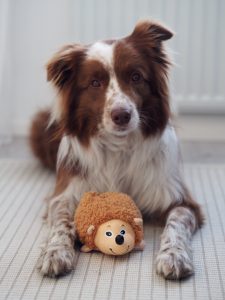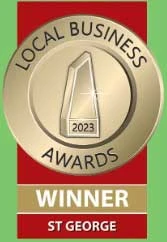Toys as Reward
Training with toys is fun!
Training your dog with toys is more exciting to the dog than food reward. I do use treats too, but it depends on what I’m training. I consider food reward as a way to focus the dog and toys as a way to create drive. Toys can bring out arousal and frustration, which sometimes causes a dog to lose focus. You need a good balance of toys and food when training a dog.
With low-drive dogs it’s possible to do more repetitions with food than with a toy. And high-drive dogs will work for a toy all day long. These dogs respond very well to toys. High arousal dogs are easily stimulated dogs who are willing to work and have the motivation and desire to work. So basically most working dogs are easily trainable with toys. If I need my border collie to be calm and use her brain to figure out what I want her to do I use treats.
The first step of teaching your dog a toy reward is finding a toy the dog likes. Then, you need to teach a good foundation including a solid “drop” command so there’s no conflict over the toy. Playtime is never a game of who’s the boss of the toy. You are always the boss. The dog can drop the toy on the floor or trade it for a treat. If you are having trouble with this, use another toy that the dog doesn’t want as much first. Then you can gradually move on to using higher value toys.
My dog’s not interested in toys
All dogs can be taught to enjoy toys. It takes more work and you might need to use treats to get your dog interested in toys but it can be trained.
To increase a low-drive dog’s drive movement is your friend! I always say that to be interesting to your dog you need to be excited, active and sometimes even make an idiot of yourself.
Make a toy desirable by holding onto it. Make it something that your dog finds fascinating and really, really wants. You can even build frustration just a little. Play hard-to-get and find good toys to motivate your dog. For example ropes create more drive because they move faster and are unpredictable.
My dog is more interested in the toy than in me
You need to become more interesting to your dog. Start playing more, tug of war or fetch are great ways to increase your value. Be the source of everything fun.
Some dogs learn to play with the toy, not with the person holding the toy. That’s why it’s always important to have rules even when you play. Dog’s that get too excited about the toy need to learn to “earn the toy”.
Play with a pattern of “drive, exercise, drive.” Start with a toy in your pocket or in your hand, then ask the dog for a behaviour, like sit. As a reward, offer the toy for a few seconds. Ask the dog to release the toy, then ask for another behaviour and reward with a toy again. These are not play sessions in between. Continue that way throughout the session. The toy is a reward just as a treat would be.
In training mode, the dog is working for the toy, and he works fast because you are withholding the reward and he really wants it.
A play session at the end can serve as a jackpot for a good work, and that can be as long as you have time for.
If a dog gets too near my hand and bites by mistake, the game ends immediately. Dogs can be very careful with their mouths, but not enough people require them to be.
Always train in short sessions. “Short” means just a few minutes, or even one minute for puppies. Multiple sessions throughout the day that add up to 15 minutes are better than 15 minutes all at once. Play with your dog every day. Have fun and always end on a positive note.




Hi Aniina, we have a nine month golden retriever cross who want to bring to your Obedience training. We also…
Good afternoon, How old does your dog have to be to commence at the beginners agility dog class. 12month?? Thank…
Hi, I have a 3 year old cocker spaniel who is quite reactive. She reacts to bikes, bicycles, children, and…
Hi Can I bring my Daughter along to the Puppy class? thanks
Hi Anniina. What if one of the Saturdays is raining? Is the class pushed out to the next week or…